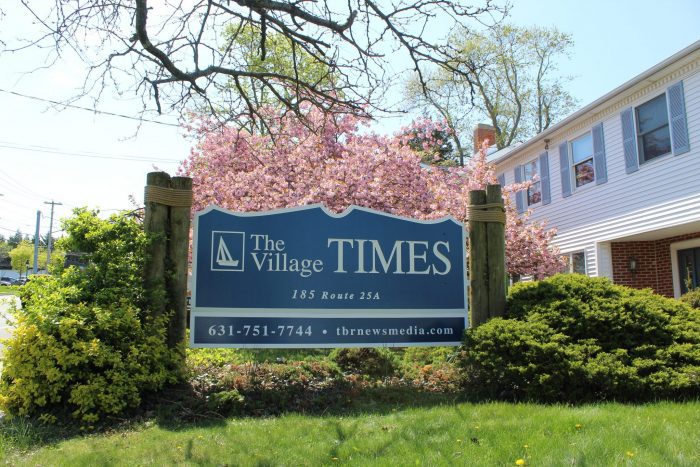Notice: Suffolk County 5th District office relocating to East Setauket
Dear Constituents,
I am writing to inform Suffolk County’s Fifth Legislative District constituents thatmy office is moving from 306 Main Street in Port Jefferson to 36 Route 25A in East Setauket. Our first day at the new location will be Tuesday, Oct. 15.
Please feel free to visit our new location to discuss concerns or to share yourideas for improving our communities. My staff and I can also be reached by calling 631-854-1650 or emailing [email protected].
Please note that LD5 includes Belle Terre, East Setauket, Old Field, Poquott, PortJefferson, Port Jefferson Station, Setauket, Stony Brook, Stony Brook University, South Setauket, Terryville, and parts of Centereach, Coram and Mount Sinai.
We look forward to seeing you at our new office.
Steven Englebright
Suffolk County Legislator
District Office 5
A call to support Frank Melville Memorial Park
To the Esteemed Residents of the Three Village Community,
I write to you today on behalf of the Frank Melville Memorial Park, a cherished haven of natural beauty and wildlife, which many of you have supported and enjoyed over the years. The park, as you know, stands as a testament to our collective commitment to preserving both the splendor of nature and a sense of peace for all visitors, human and animal alike.
However, it is with a sense of deep concern and urgency that we must address a troubling issue that has recently grown more acute: The repeated violations of our strict no-fishing policy, particularly by adults and teenagers who seem to regard this rule with a mix of indifference and defiance.
Despite clear signage and our tireless efforts to educate the public on the importance of this policy, we are witnessing an alarming frequency of insubordination. The rule against fishing is not arbitrary since it serves to protect the delicate ecosystems of the pond and surrounding habitat. Our policy reflects a profound respect for the intricate balance of wildlife that calls this park home — creatures whose survival is intimately tied to the careful stewardship of their environment. Yet, we have found our efforts met with flagrant disregard and, regrettably in some instances, with outright disrespect for the park’s mission.
These actions undermine the very fabric of what we strive to accomplish at Frank Melville Park: To maintain a sanctuary where humans and nature can coexist harmoniously. When individuals violate this fundamental policy, they not only endanger wildlife but also tarnish the atmosphere of safety and order that we work so diligently to preserve.
To address this growing concern, we are asking for your support. In order to uphold the park’s regulations and ensure a safe, respectful environment for all, we must increase our security presence. This step, while necessary, comes at a significant financial cost, one which we are unable to shoulder alone. We appeal to the broader Three Village community — those of you who value this park as much as we do — to assist us through donations, which will allow us to fund additional security measures and personnel.
Your contributions will directly support our ability to safeguard the park’s natural beauty and uphold the standards that we all hold dear. Together, we can ensure that Frank Melville Park remains a space of serenity and sanctuary, free from the disorder that threatens to erode the very essence of what makes it so special.
We trust that the community’s profound appreciation for this space will inspire a shared responsibility in preserving it. Let us act now, not only to protect the park from further harm but to honor the legacy we have inherited and ensure that it thrives for future generations.
Board of Directors
Frank Melville Memorial Park
Setauket
Finding balance in Brookhaven’s development debate
I appreciated reading the letter to the editor in last week’s issue [“Brookhaven Town Board rejects suburbia”] from our neighbor, the Three Village Civic Association, regarding the recent approval by Brookhaven Town of the proposal by Staller Associates at Jefferson Plaza. Charles Tramontana and George Hoffman rightly point out the precedent-setting nature of the new CRD code the town used to approve a zoning change which will yield a density never seen before anywhere in Brookhaven. While I applaud the call for a review of a code many believe to be vague and without clear metrics as to how the density bonuses were set (and by whom), future revisions will leave Port Jeff Station/Terryville residents watching the barn door being closed after the horse has galloped away.
In our situation, we are now facing the reality of a face-changing project which can yield up to 280 apartments — nearly three times what any other multifamily development could yield. Additionally, the developer has the benefit of constructing 49,000 square feet of commercial space on this 10-acre parcel.
Our organization has been clear and consistent for the past two years that we wanted to welcome the redevelopment of this long-neglected shopping center and are mindful of the need for attainable housing for our young people. So, our considerable efforts to identify concerns associated with this intensive proposal are intended to minimize negative impacts and not to oppose all change.
However, we advocated many issues be addressed ahead of this zoning change which will surely change the character of our community. While some input was considered, the final product appears changed mostly around the margins. Presently, the density can be maxed out, there are still many areas with four-story buildings, first responder access and resources needs to be discussed, traffic concerns remain, as well as an architectural design providing true public spaces and sense of a place.
Also, the price point of apartments starting at $2,200-$2,400 leaves us still figuring how to retain our young, and the public benefit many developers provide to address the impacts on a community is quite miniscule in comparison to the scope of this project. Most importantly, this large-scale development will occur without a full and comprehensive planning process to help our hamlet properly digest this growth-inducing facility along the entire Route 112 corridor.
I will note, at our request, Councilmember Jonathan Kornreich [D-Stony Brook] persuaded the town to take a look at traffic patterns which will be affected regionally — and not just site specific to Jefferson Plaza. Also, the councilmember has provided there will be a process for a visual preference survey that we suggested to guide and shape the architecture with community input.
Kornreich has often tried to assure our area that many of our valid concerns can be addressed during the site plan review process, which will now begin. While I strongly believe our neighborhood would have been well served to have these issues ironed out in advance, I take him at his word and trust we will make a strong effort to partner with the town and hold them to that promise. It will take all our voices to shape the face of our future in a way which improves our community and I urge all my neighbors to help in this process.
Ira Costell, President
Port Jefferson Station/Terryville Civic Associatio
A farewell to six years of growth and community
For the last six years, I have had the honor and privilege to serve as the Three Village Chamber of Commerce president.
Together we have accomplished so many of the goals set at the beginning of my term. A complete overhaul of our monthly accounting has resulted in the chamber being in the best financial position in its almost 50-year history.
Our real accomplishments were never planned. The business community faced unprecedented challenges in March 2020. The worldwide pandemic brought initial chaos and confusion to the ever-changing governmental regulations of trying to keep the doors open for business. The Board of Directors led the charge to work with our elected officials and within a very short period of time, we were assisting our community’s businesses in these unchartered waters. This was a very difficult environment for everyone.
As a longtime board member, I can say with great confidence I am leaving the chamber in good hands as my term as president comes to an end
So many positive and rewarding activities have come to mind over the last six years. Giving to the annual George Rehn Scholarship to high school seniors as the first chamber president to graduate from Ward Melville High School — and certainly not the last. The West Meadow Beach barbecues of the past, the current golf outings and many holiday parties that brought our business community together will always be cherished.
I want to thank my fellow board members and our executive director, Jane Taylor, for their commitment and continuous support, making this one of the best and most viable service organizations I have ever been part of.
The chamber leadership will continue to prosper under its new president, Carmine Inserra, and the current Board of Directors. I wish them well and I am here to always help to keep our business community vibrant and healthy.
I have personally enjoyed all the friendships and business networking contacts among our membership and I will look forward to my new role as president emeritus. I love this community and I am so grateful for the opportunity to serve through this wonderful organization.
I look forward to the continued success of the Three Village Chamber of Commerce.
Charles A. Lefkowitz
Three Village Chamber of Commerce
Editor’s note: The writer is chairman of the Suffolk County Water Authority.























